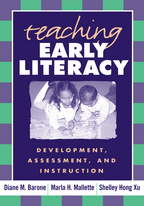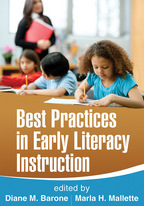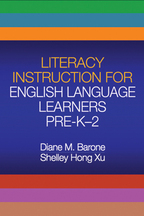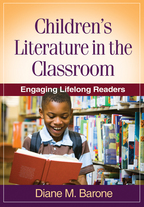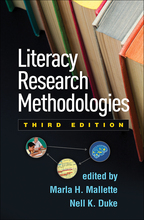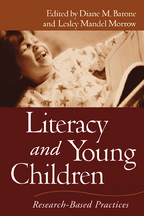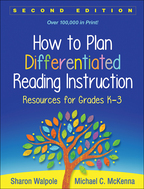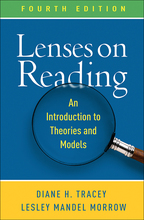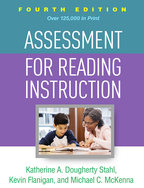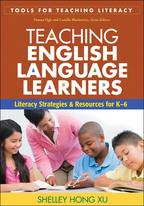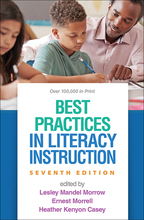Teaching Early Literacy
Development, Assessment, and Instruction
Diane M. Barone, Marla H. Mallette, and Shelley Hong Xu
Paperbacke-bookprint + e-book
Paperback
orderDecember 4, 2004
ISBN 9781593851064
Price: $43.00246 Pages
Size: 7" x 10"
“In the graduate program that I direct, we emphasize the preparation of teachers for very diverse classrooms. I will definitely use this book as a text in my early literacy courses. It contains many wonderful, specific ideas for teachers, particularly those working with English language learners. I especially appreciated the chapter on ways to collaborate effectively with parents who may not be fluent in English. Among the book's other excellent features are suggestions for integrating technology into the classroom and helpful checklists and rubrics throughout. Readable, engaging, and practical, this book contains the kind of information that teachers need.”

—Beth Roberts, PhD, Division of Education, Oglethorpe University, Atlanta, Georgia
“Teaching Early Literacy is a particularly comprehensive text on early literacy learning and research-based instruction. The emphasis on the practical applications of the material contained in each chapter makes this book especially attractive and useful for graduate students in literacy and teachers engaged in professional development. The inclusion of the grade-level teachers’ perspectives in the appropriate chapters provides an insightful glimpse of practice that is derived from research. This integration of research and practice makes Teaching Early Literacy an excellent choice for courses in early literacy development and the teaching of reading in elementary schools.”

—Deborah Gee Woo, EdM, Department of Learning and Teaching, Graduate School of Education, Rutgers, The State University of New Jersey
“This book makes an important contribution to our understanding of how children develop as readers and writers. It describes three phases of reading and writing development and explains ways to target the instructional needs of children at each phase. Chapters focusing on teaching English language learners are especially rich with helpful information. I also appreciated the book's listings of relevant websites and its discussion of how to engage families in children’s literacy development. Undergraduate and graduate students in early childhood, elementary, or reading education will find this book highly useful in learning how to address the instructional needs of all students, particularly those considered to be at risk.”

—Lea M. McGee, EdD, College of Education, University of Alabama
—Beth Roberts, PhD, Division of Education, Oglethorpe University, Atlanta, Georgia
“Teaching Early Literacy is a particularly comprehensive text on early literacy learning and research-based instruction. The emphasis on the practical applications of the material contained in each chapter makes this book especially attractive and useful for graduate students in literacy and teachers engaged in professional development. The inclusion of the grade-level teachers’ perspectives in the appropriate chapters provides an insightful glimpse of practice that is derived from research. This integration of research and practice makes Teaching Early Literacy an excellent choice for courses in early literacy development and the teaching of reading in elementary schools.”
—Deborah Gee Woo, EdM, Department of Learning and Teaching, Graduate School of Education, Rutgers, The State University of New Jersey
“This book makes an important contribution to our understanding of how children develop as readers and writers. It describes three phases of reading and writing development and explains ways to target the instructional needs of children at each phase. Chapters focusing on teaching English language learners are especially rich with helpful information. I also appreciated the book's listings of relevant websites and its discussion of how to engage families in children’s literacy development. Undergraduate and graduate students in early childhood, elementary, or reading education will find this book highly useful in learning how to address the instructional needs of all students, particularly those considered to be at risk.”
—Lea M. McGee, EdD, College of Education, University of Alabama

